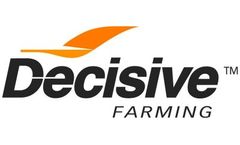Soil And Nutrient Losses In Articles & Analysis: Older
163 articles found
Agrochemicals are chemical formulations typically used to control pests, pathogens and provide nutrients to the soil. To meet the growing demand for food, agrochemicals are used in agriculture in large quantities to bridge the gap between food production and consumption. However, the unbalanced application of agrochemicals has led to environmental degradation and poses many challenges to ...
Biochar is a carbon-rich material produced through the pyrolysis of organic biomass under low oxygen conditions. Common feedstocks include agricultural waste, forestry residues, and even municipal organic waste. Its porous structure and chemical properties make it highly effective for soil improvement and environmental benefits. Agricultural practices in developing countries often face hurdles ...
Whether you’re drinking tap water or well water, its quality needs to be monitored regularly. With tap water, the city or local government regularly tests for contaminants like petroleum, heavy metals and other pollutants. However, private water well testing is left up to the ...
Agricultural Enzymes Agricultural enzymes, sourced from microorganisms like fungi and bacteria, are catalyst that accelerates the chemical reaction that unblocks the nutrients present in the soil, and helps increase crop production, soil fertility, and food protection. The most commonly used enzymes in plant growth and soil ...
Agricultural Enzymes Agricultural enzymes, sourced from microorganisms like fungi and bacteria, are catalyst that accelerates the chemical reaction that unblocks the nutrients present in the soil, and helps increase crop production, soil fertility, and food protection. The most commonly used enzymes in plant growth and soil ...
Classification There are many classification methods of soil amendment. The details are as follows. According to their properties, soil amendment can be divided into acid soil amendment, alkaline soil amendment, nutrient soil amendment, organic soil amendment, inorganic ...
Agricultural Enzymes Agricultural enzymes, sourced from microorganisms like fungi and bacteria, are catalyst that accelerates the chemical reaction that unblocks the nutrients present in the soil, and helps increase crop production, soil fertility, and food protection. The most commonly used enzymes in plant growth and soil ...
The concept of crop rotation dates back thousands of years, with ancient civilizations such as the Mesopotamians and Egyptians employing rudimentary forms of rotation to sustain their agricultural endeavors. The basic principle behind crop rotation is alternating the types of crops grown in a particular field over time to improve soil fertility, control pests, and maximize yields. In traditional ...
Biochar, a carbon-rich material produced through the pyrolysis of biomass, has garnered increasing attention for its potential as an organic fertilizer. In this article, we will delve into the myriad benefits and applications of biochar in agricultural practices, highlighting its role in soil health, nutrient retention, and environmental sustainability. Introduction to Biochar Biochar is a stable ...
Kunz Farm in Beiseker, Alta., is a multifaceted operation focused on a sustainable future. With Pat Kunz at the helm, alongside his family, the farm has embraced soil health as the foundation for long-term success in their wheat, canola, barley, and pea rotation, as well as their cow-calf and feedlot ...
What is Leaf tissue testing? Leaf tissue testing is a crucial process for evaluating the concentration of essential elements within plant tissue. Essential nutrients, categorised as micronutrients and macronutrients, play key roles in sustaining the plant’s life cycle. Micronutrients, required in smaller amounts and macronutrients needed in larger amounts are essential for achieving ...
The success of the OCP Kenya-OCP School Lab (OSL) project stems from a comprehensive approach to addressing agricultural challenges in Kenya. A review of various surveys on the state of agriculture revealed a connection between low crop yields, reduced incomes, and soil fertility constraints, particularly soil acidity. Additionally, a lack of awareness about soil health and fertility ...
Introduction: Modern agriculture is increasingly reliant on technology to improve efficiency, sustainability, and productivity. One key technological innovation that is revolutionizing the way farmers manage their land is soil sensor technology. Soil sensors provide real-time data on crucial soil parameters, enabling farmers to make informed decisions about irrigation, fertilization, and overall ...
ByJXCT
With this data, farmers can adjust irrigation schedules, reducing water waste and energy consumption. Enhanced Nutrient Management: Soil sensors provide accurate measurements of nutrient levels in the soil, enabling farmers to apply fertilizers more efficiently. ...
ByJXCT
Introduction: Soil health plays a crucial role in agricultural productivity and environmental sustainability. Monitoring soil health is essential for farmers to make informed decisions about crop management practices, fertilizer application, and irrigation strategies. In recent years, advanced soil sensor systems have revolutionized the way we monitor and assess soil health parameters. This ...
ByJXCT
Avoid excess crop nutrients in your fertilizer strategy to maintain soil health and protect your pocketbook The push to produce higher yields per acre every year continues to weigh heavily on western Canadian farmers. That pressure is accompanied by economic and environmental concerns. Should you invest more money into crop nutrients to reach record yields? Will that investment pay off? Will ...
Identify and correct crop nutrient deficiencies in your soil to increase yield and profit Achieving prosperity in Canadian agriculture is a balancing act. While new technologies increasingly grow your potential to overcome limiting factors and boost yields, oftentimes revisiting the basics will further support your efforts to reach an optimum balance in soil nutrients. A great place to start is ...
When it comes to applying seed-placed fertilizer, it is important to find the suitable application rate for each specific soil type and composition. But it is also important to understand that seeding equipment and technology is a factor, and may impact growers’ fertilizer rates. The seed-safe rate for fertilizers relies on numerous factors. Crop choice, soil composition, pH levels, ...
EC mapping helps farmers choose the right crop for each soil zone, maximizing yield and minimizing stress on the plants. Additionally, crop rotation strategies can be informed by EC data, allowing farmers to balance soil nutrients and prevent salt buildup over time. ...
Unlocking Data-Driven Insights for Sustainable and Efficient Farming For centuries, agriculture has relied on tradition and intuition, with farmers often relying on their experience and gut feeling to make decisions about their land. However, the 21st century has ushered in a new era in agriculture, one driven by data and innovation. At the forefront of this revolution are intelligent soil ...









